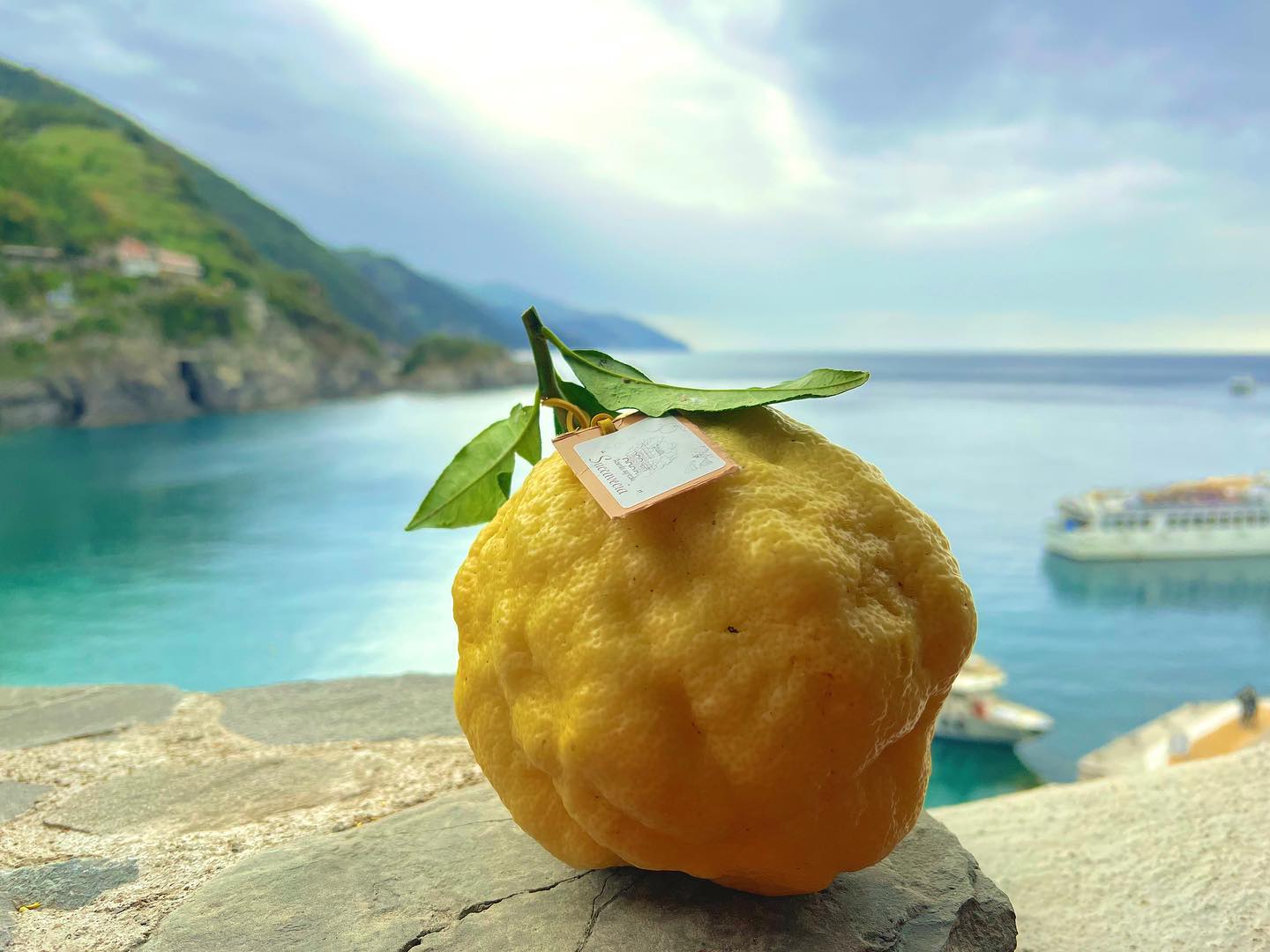Monterosso lemon

Monterosso lemon
The unique environment in which these citrus fruits thrive imparts the Monterosso lemon with distinctive qualities, such as its fragrance, aroma, and refined taste. The flavour of this fruit is also remarkable and unique, making it enjoyable to eat on its own, much like an orange. Its sweet-and-sour taste makes it particularly refreshing. The lemon is a re-flowering species, with blossoms and buds appearing at the end of winter and again towards the close of summer.
Insights
The Monterosso lemon (Citrus Limon) is a fruit tree native to China, resulting from a cross between a pomelo and a citron. Monterosso lemons are primarily consumed fresh, used for juices, or in cooking for preparing both sweet and savoury dishes, and for making liqueurs, utilising all parts of the fruit. In local culinary tradition, the leaves were also used, releasing their aroma during cooking; they were employed like modern baking paper to line pans in the preparation of desserts such as castagnaccio.
Features
The fruit is quite large, with an irregular elongated elliptical shape and a pointed tip. The skin is rough and rich in essential oils, while the inner part consists of a thick, spongy white mass known as albedo. The flesh is yellow and juicy, containing seeds.
How it's made
The cultivation of the lemon groves takes place in the field, with bitter orange often used as the rootstock. The ideal area for growing lemons in Monterosso is the valley floor, where the soils, locally known as "cian," are more humid and protected from wind and salt spray. These areas are distinguished by traditional stone walls bonded with lime mortar from Pignone, which are more durable than dry stone walls and can reach heights of up to two metres to provide shelter from the wind.
Irrigation and other agricultural tasks are performed manually. Pruning is carefully managed to achieve a balance in the tree’s growth, ensuring optimal sunlight and air circulation. Each lemon tree can yield between 200 and 600 fruits per year, with harvesting done multiple times annually, always by hand.
Experience a journey through ligurian flavours
- Recipes
- Itineraries
- Experiences



